In the dynamic world of transportation and logistics, the flatbed trailer chassis stands as a cornerstone, enabling efficient movement of goods across varied terrains. At CarMax Trailer, we pride ourselves on engineering superior chassis solutions that combine durability, functionality, and innovation. This comprehensive guide delves into the intricacies of flatbed trailer chassis, exploring their components, materials, design features, manufacturing processes, and the myriad applications they serve.
Understanding Flatbed Trailer Chassis
A flatbed trailer chassis serves as the foundational framework upon which the trailer is built. Unlike enclosed trailers, flatbeds offer an open platform, making them ideal for transporting oversized or irregularly shaped cargo. The chassis must withstand substantial loads, ensure stability, and provide adaptability for diverse hauling needs.
Key Components of a Flatbed Trailer Chassis
A robust flatbed trailer chassis is composed of several critical components, each contributing to the overall performance and reliability.
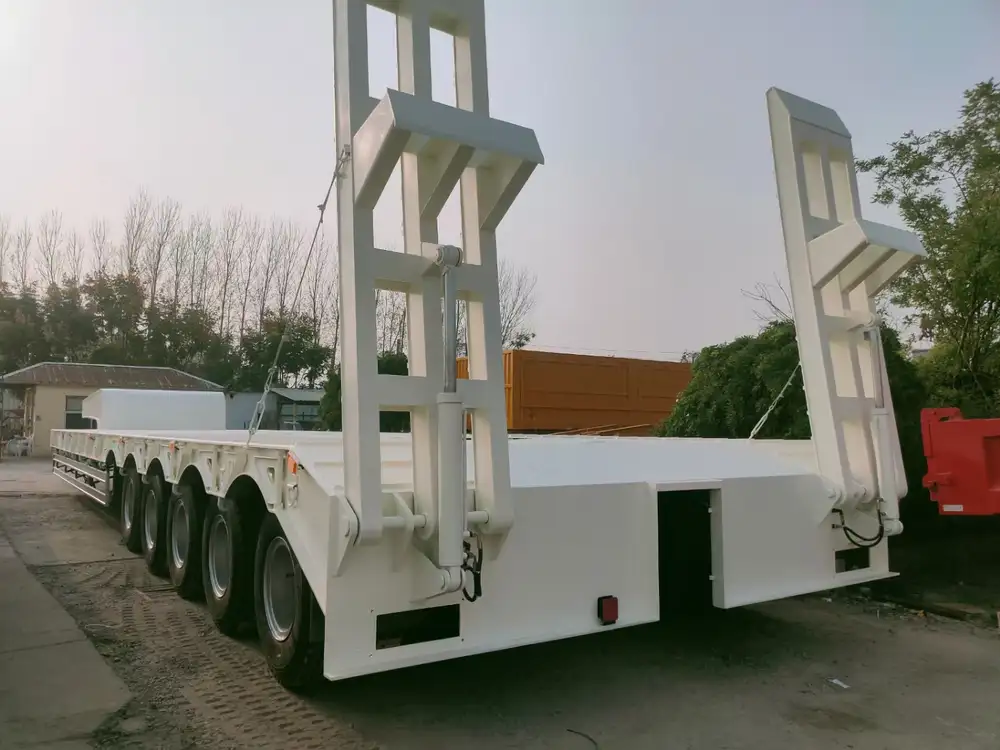
1. Frame Construction
The frame is the backbone of the chassis, typically constructed from high-strength steel or aluminum. Its design must accommodate load distribution, resist bending or twisting, and endure the stresses of constant use.
- Material Selection: High-grade steel provides exceptional strength, while aluminum offers lightweight advantages without compromising durability.
- Structural Integrity: Welded joints and reinforced crossmembers enhance the frame’s resilience.
2. Suspension Systems
Effective suspension systems are vital for maintaining stability and ensuring a smooth ride, especially when hauling heavy or uneven loads.
- Types of Suspension:
- Leaf Spring Suspension: Traditional and cost-effective, suitable for moderate load capacities.
- Air Suspension: Offers superior comfort and load management, ideal for heavy-duty applications.
- Customization: Suspension can be tailored to specific load types and weight distributions.
3. Axles and Wheels
Axles and wheels play a pivotal role in bearing the load and facilitating movement.
- Axle Configurations:
- Single Axle: Best for lighter loads and shorter distances.
- Dual Axle: Provides enhanced load distribution and stability for heavier hauls.
- Wheel Specifications: High-quality wheels with puncture-resistant tires are essential for durability and performance.

4. Hitch and Coupling
The hitch mechanism connects the chassis to the towing vehicle, ensuring secure linkage and ease of maneuvering.
- Standard Types:
- Styrene 5th Wheel Hitch: Popular in heavy-duty applications for its reliability.
- Gooseneck Hitch: Offers superior stability and maneuverability for specialized trailers.
- Safety Features: Locking mechanisms and fail-safes prevent accidental disconnections.
Materials Used in Flatbed Trailer Chassis
The choice of materials significantly impacts the chassis’s performance, weight, and longevity. CarMax Trailer meticulously selects materials to balance strength, durability, and cost-effectiveness.
Steel vs. Aluminum
| Feature | Steel Chassis | Aluminum Chassis |
|---|---|---|
| Strength | Extremely strong and durable | Lightweight with good strength |
| Weight | Heavier, increasing fuel consumption | Lighter, enhancing fuel efficiency |
| Corrosion | Prone to rust without protection | Naturally corrosion-resistant |
| Cost | Generally less expensive | Higher initial cost, lower maintenance |
| Repairability | Easier to repair in most cases | Requires specialized welding |
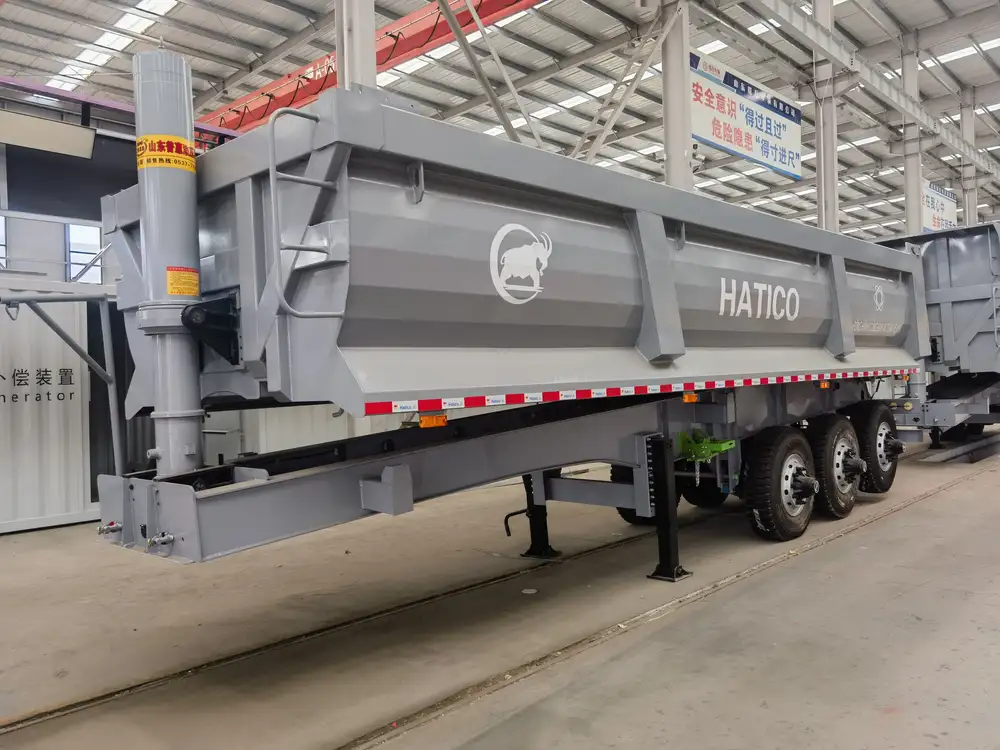
Corrosion Resistance
To combat environmental factors, chassis materials undergo corrosion-resistant treatments such as galvanization or powder coating. CarMax Vehicle employs advanced protective measures to ensure longevity, even in harsh conditions.
Weight Considerations
A lighter chassis reduces overall trailer weight, improving fuel efficiency and load capacity. Aluminum chassis, for instance, offer significant weight savings without sacrificing strength, making them ideal for applications where weight is a critical factor.
Design Features for Enhanced Performance
Innovative design elements are integral to optimizing the flatbed trailer chassis’s functionality and efficiency.

Load Capacity
Determining the appropriate load capacity is essential for matching the chassis to specific hauling requirements.
- Standard Capacities: Range from 10,000 lbs to over 40,000 lbs.
- Customization: Tailored solutions to accommodate unique load specifications.
Aerodynamics
Streamlined designs minimize air resistance, contributing to better fuel economy and reduced operational costs.
- Shape Optimization: Rounded edges and smooth surfaces lower drag forces.
- Accessory Integration: Aerodynamic fairings and side skirts enhance overall efficiency.
Customization Options
Every hauling need is unique, and customizable chassis options provide flexibility to meet diverse demands.
- Adjustable Components: Modular sections allow for easy modifications.
- Accessory Compatibility: Integration points for lighting, side racks, and security features.
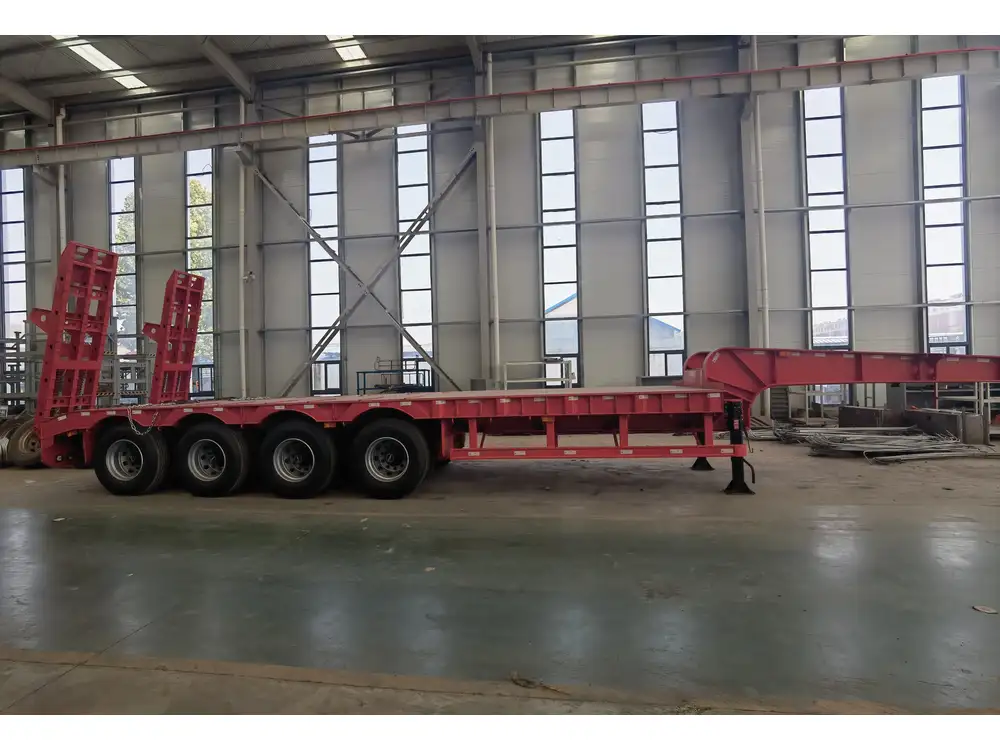
Manufacturing Process of CarMax Trailer Flatbed Chassis
At CarMax Trailer, precision and quality are paramount in our manufacturing process, ensuring each chassis meets stringent standards.
Precision Engineering
Our state-of-the-art engineering facilities utilize advanced CAD software and computer-aided manufacturing (CAM) to design and produce chassis with exact specifications.
- Design Accuracy: Ensures optimal performance and fitment.
- Simulation Testing: Virtual models undergo rigorous stress and load simulations before production.
Quality Control Measures
Every chassis undergoes comprehensive quality checks to guarantee durability and reliability.
- Material Inspection: Verification of material integrity and compliance with industry standards.
- Structural Testing: Load testing and stress analysis to identify potential weaknesses.
- Final Inspection: Detailed examination of welds, joints, and overall construction quality.

Advantages of CarMax Vehicle Flatbed Trailer Chassis
Choosing CarMax Vehicle for your flatbed trailer chassis offers a multitude of benefits, distinguishing us in a competitive market.
Durability and Longevity
Our chassis are engineered to withstand the toughest conditions, ensuring a long service life and minimizing downtime.
- Robust Construction: High-strength materials and reinforced structures provide exceptional resilience.
- Wear Resistance: Enhanced protection against wear and tear extends chassis lifespan.
Ease of Maintenance
Designed with user convenience in mind, our chassis facilitate straightforward maintenance and repairs.
- Accessible Components: Strategic placement of parts for easy inspection and servicing.
- Standardized Parts: Availability of universal components simplifies replacement processes.

Cost-Effectiveness
Investing in a CarMax Trailer chassis yields long-term savings through reduced maintenance costs and enhanced fuel efficiency.
- Competitive Pricing: Affordable without compromising quality.
- Energy Savings: Lightweight materials and aerodynamic designs contribute to lower fuel consumption.
Applications of Flatbed Trailer Chassis
Flatbed trailer chassis are versatile, serving a wide range of industries and applications.
Construction Industry
Ideal for transporting building materials, machinery, and oversized equipment to and from construction sites.
- Heavy Equipment Transport: Capable of hauling bulldozers, excavators, and other machinery.
- Material Delivery: Efficient movement of lumber, steel beams, and other construction materials.

Logistics and Transportation
Essential for logistics companies managing diverse freight, enabling the movement of goods without size restrictions inherent to enclosed trailers.
- Cargo Flexibility: Suitable for palletized goods, containers, and large shipments.
- Quick Loading and Unloading: Open design allows for rapid handling of goods.
Heavy Equipment Transport
Specialized applications require chassis capable of supporting and securing heavy machinery during transit.
- Reinforced Structures: Enhanced support for extreme weights.
- Stabilization Features: Integrated systems to secure and balance heavy loads.
Comparing Flatbed Trailer Chassis with Other Types
Understanding the differences between trailer types helps in selecting the right chassis for specific needs.
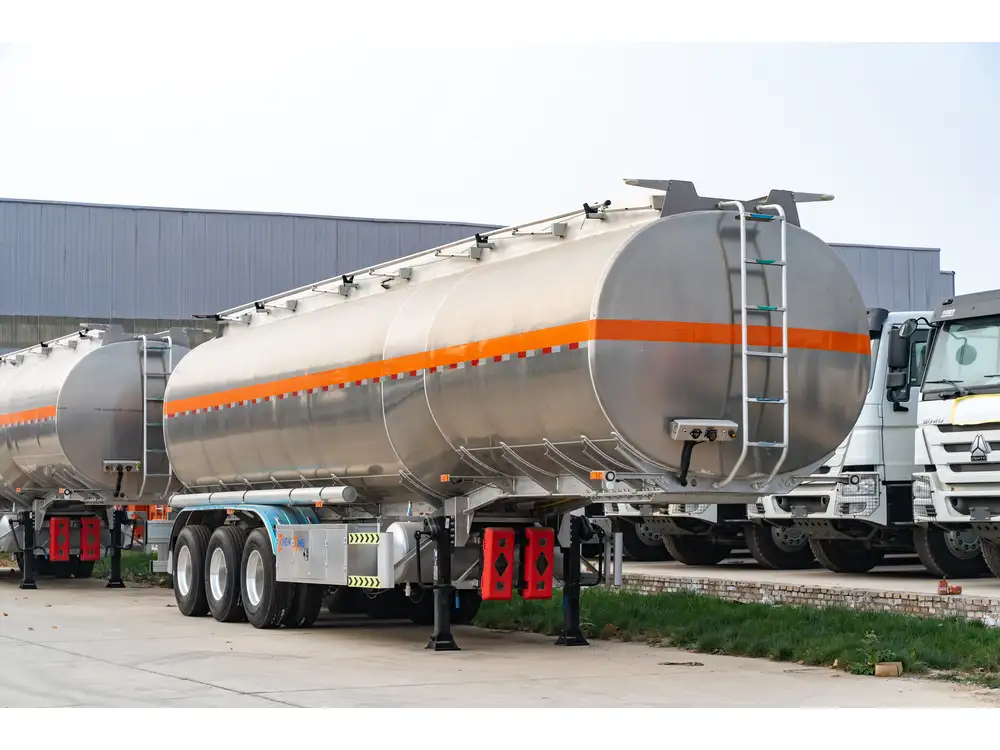
Enclosed Trailers
- Pros: Protect cargo from weather and theft.
- Cons: Limited by size restrictions and added weight.
Refrigerated Trailers
- Pros: Maintain controlled temperatures for perishable goods.
- Cons: Higher energy consumption and initial cost.
Step Deck Trailers
- Pros: Increased loading height for oversized loads.
- Cons: More complex design and higher cost.

Flatbed Trailers
- Pros:
- Versatile and adaptable for various cargo types.
- Easier loading and unloading due to open design.
- Generally lighter and more fuel-efficient.
- Cons:
- Less protection from elements and theft.
- Requires securement for cargo to prevent shifting.
Selecting the Right Flatbed Trailer Chassis for Your Needs
Choosing the optimal chassis involves evaluating several factors to ensure alignment with operational requirements.
Assessing Load Requirements
Understanding the weight and dimensions of the cargo is fundamental.
- Load Capacity: Match the chassis’s maximum weight limit with your hauling needs.
- Dimensions: Ensure the chassis dimensions accommodate the size of your cargo.
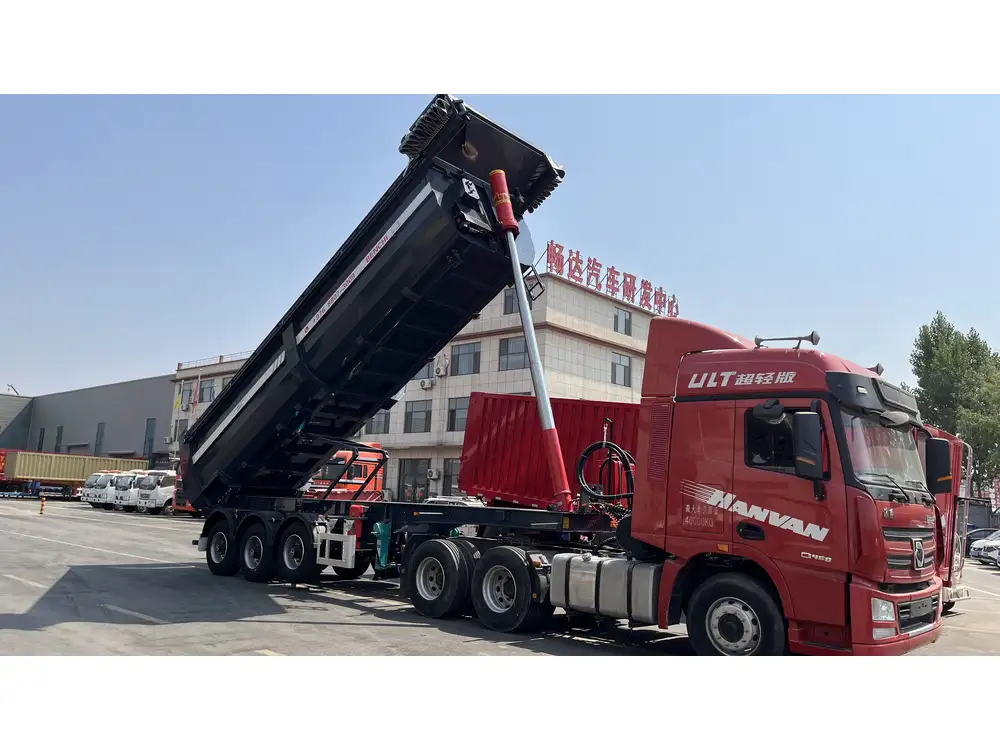
Environmental Considerations
The operating environment influences material and design choices.
- Corrosive Environments: Opt for corrosion-resistant materials and protective coatings.
- Rugged Terrain: Reinforced frames and robust suspensions are essential for off-road applications.
Budget Constraints
Balancing cost with quality and functionality ensures value for investment.
- Initial Cost vs. Long-Term Value: Consider both upfront expenses and ongoing maintenance costs.
- Financing Options: Explore flexible payment plans and financing solutions offered by CarMax Vehicle.
Maintenance Tips for Prolonging Chassis Lifespan
Proper maintenance is crucial for sustaining the performance and extending the life of your flatbed trailer chassis.

Regular Inspections
Frequent checks help identify and address issues before they escalate.
- Structural Integrity: Inspect for cracks, bends, or signs of wear in the frame.
- Component Health: Examine suspension systems, axles, and hitch mechanisms for damage or deterioration.
Proper Loading Techniques
Correct loading practices prevent undue stress on the chassis.
- Balanced Loads: Distribute weight evenly to maintain stability and avoid overloading specific areas.
- Securing Cargo: Use appropriate tie-downs and restraints to prevent shifting during transit.
Timely Repairs
Addressing repairs promptly mitigates further damage and ensures safety.
- Professional Service: Engage certified technicians for accurate diagnostics and repairs.
- Spare Parts: Keep essential spare parts on hand to facilitate quick fixes.
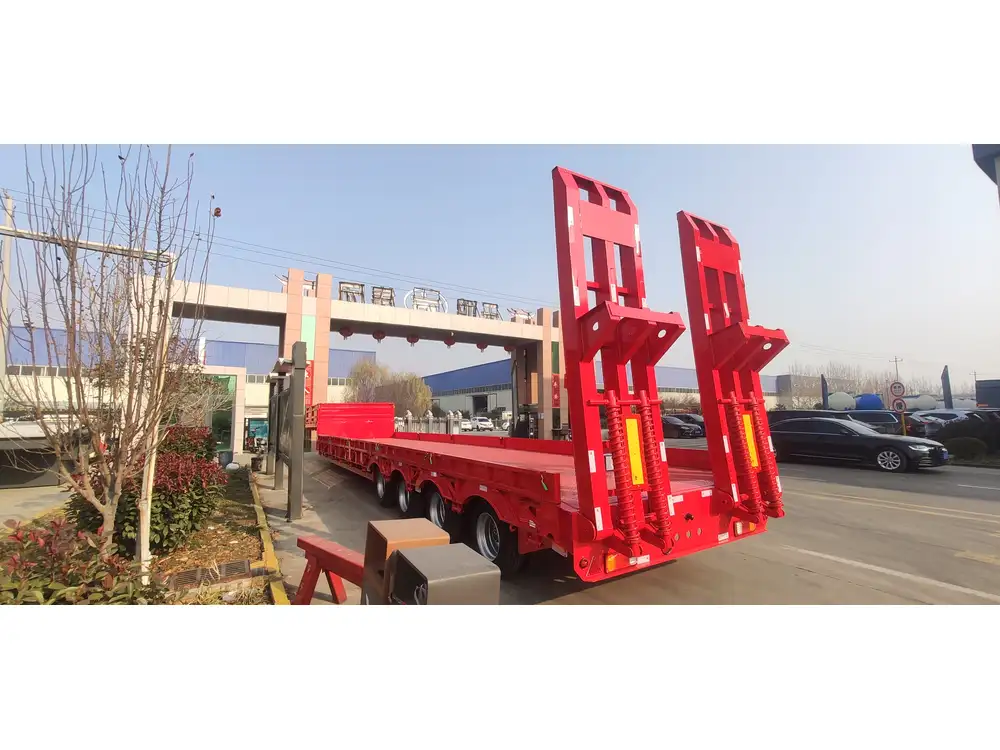
Innovations in Flatbed Trailer Chassis Design
The flatbed trailer chassis industry continually evolves, embracing innovations to enhance performance and sustainability.
Lightweight Materials
Advancements in materials technology allow for lighter chassis without compromising strength.
- Aluminum Alloys: Provide significant weight reduction, improving fuel efficiency and payload capacity.
- Composite Materials: Offer potential for further weight savings and enhanced durability.
Smart Technologies
Integration of smart technologies transforms chassis functionality and monitoring.
- Telematics Systems: Enable real-time tracking of chassis performance and location.
- Automated Load Balancing: Utilize sensors and automated controls to optimize load distribution dynamically.
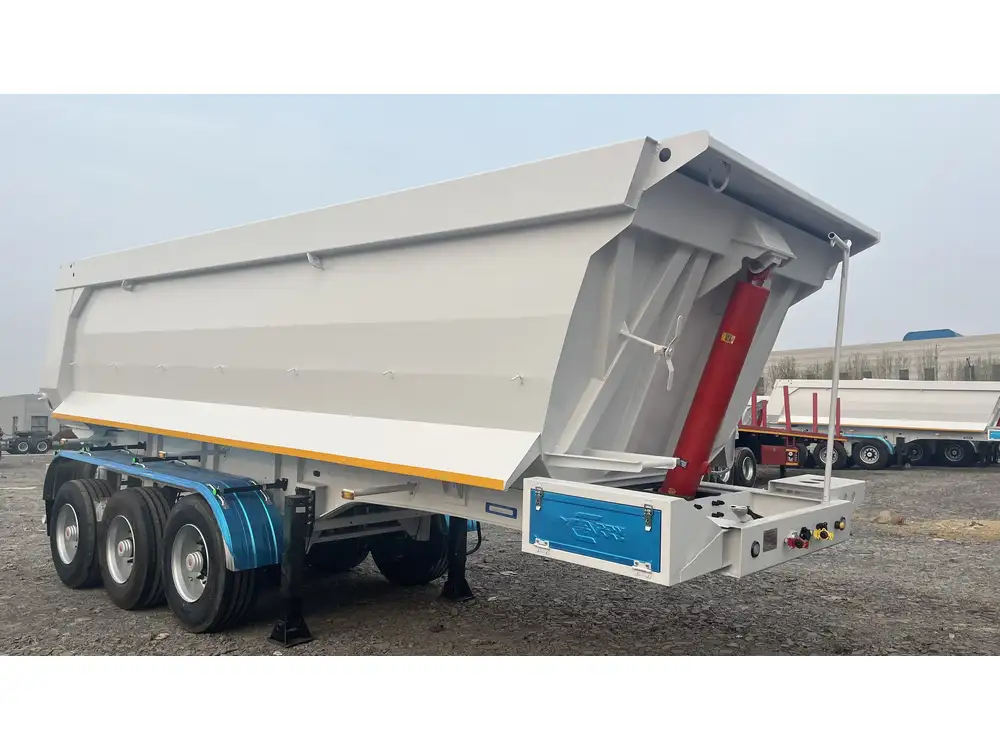
Sustainability Efforts
Eco-friendly design practices reduce environmental impact and promote sustainable operations.
- Recyclable Materials: Incorporate materials that can be recycled at the end of their lifecycle.
- Energy-Efficient Manufacturing: Implement processes that minimize energy consumption and waste production.
Why Choose CarMax Trailer for Your Flatbed Chassis Needs
Selecting CarMax Trailer means partnering with an industry leader committed to excellence and customer satisfaction.
- Expertise: Decades of experience in designing and manufacturing top-tier trailer chassis.
- Customization: Tailored solutions to meet unique and specific requirements.
- Support: Comprehensive customer service, from selection to post-purchase maintenance.
Conclusion
A flatbed trailer chassis is a critical component in the transportation and logistics sector, underpinning the safe and efficient movement of diverse cargo types. CarMax Vehicle excels in delivering flatbed trailer chassis that embody strength, versatility, and innovation. By understanding the components, materials, design features, and maintenance practices outlined in this guide, you can make informed decisions that enhance your operational efficiency and drive business success.
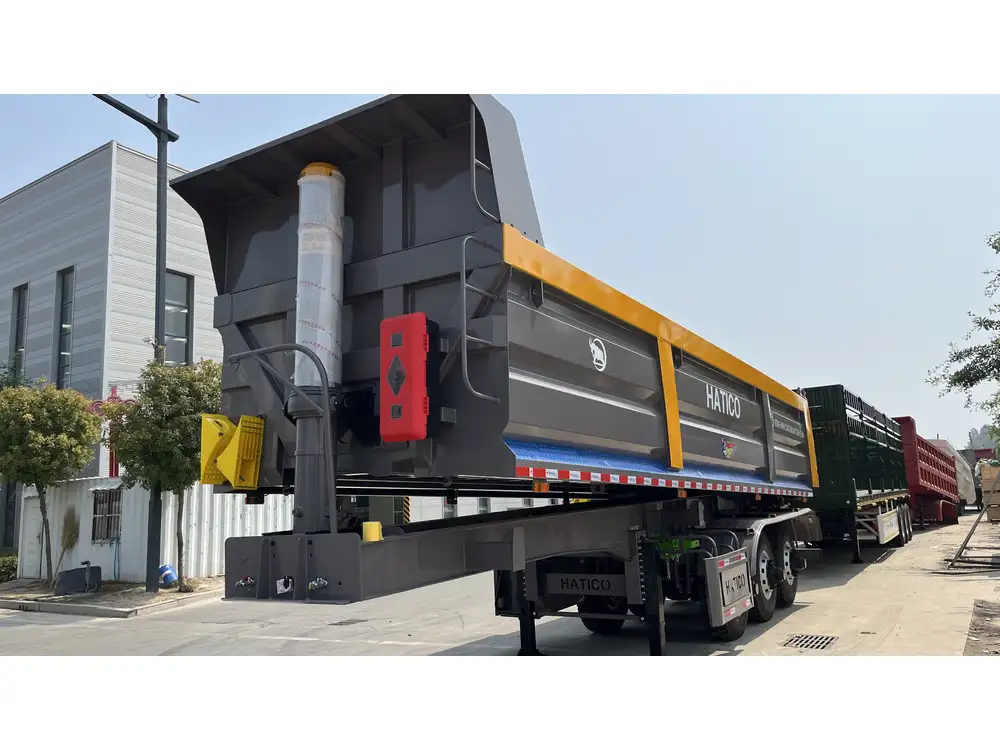
Frequently Asked Questions
1. What is the primary difference between a flatbed trailer chassis and an enclosed trailer chassis?
The primary difference lies in their design and functionality. Flatbed trailer chassis offer an open platform ideal for transporting oversized or irregularly shaped cargo, allowing for easier loading and unloading. In contrast, enclosed trailer chassis support a fully enclosed structure, providing protection from weather and theft but typically restricting cargo size due to enclosed dimensions.
2. How does the material choice affect the performance of a flatbed trailer chassis?
Material choice significantly impacts the chassis’s weight, strength, and corrosion resistance. Steel chassis are exceptionally strong and durable but heavier, which can reduce fuel efficiency. Aluminum chassis are lighter, enhancing fuel economy and payload capacity, while also offering natural corrosion resistance, although they may have a higher initial cost.
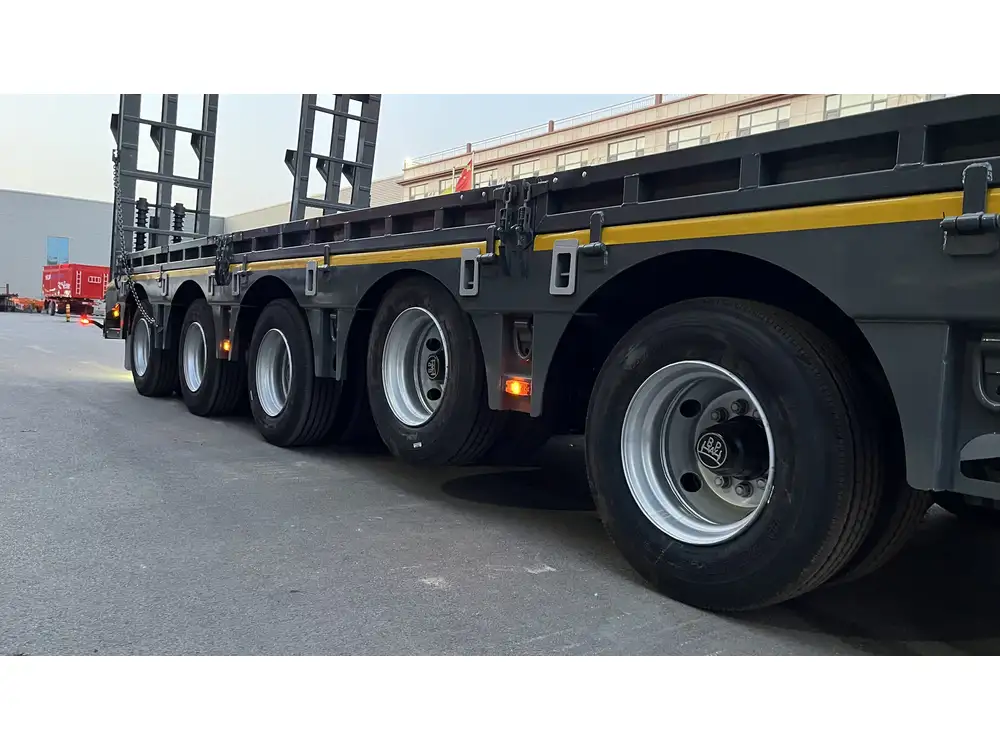
3. What maintenance practices can prolong the lifespan of a flatbed trailer chassis?
Regular maintenance practices include conducting frequent inspections for structural integrity and component health, ensuring proper loading techniques to prevent uneven stress, and addressing repairs promptly. Additionally, applying protective coatings and keeping the chassis clean from corrosive elements can significantly extend its lifespan.
4. Can flatbed trailer chassis be customized for specific hauling needs?
Yes, flatbed trailer chassis can be highly customized to meet specific hauling requirements. Customizations may include adjusting load capacities, modifying frame dimensions, integrating specialized suspension systems, and adding accessory features tailored to particular industries or types of cargo.
5. What innovations are shaping the future of flatbed trailer chassis design?
Innovations shaping the future include the use of lightweight materials like advanced aluminum alloys and composites, integration of smart technologies such as telematics and automated load balancing, and sustainable design practices that focus on recyclable materials and energy-efficient manufacturing processes. These advancements aim to enhance performance, efficiency, and environmental sustainability.



